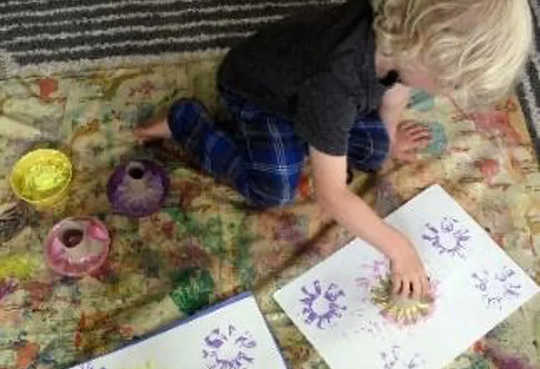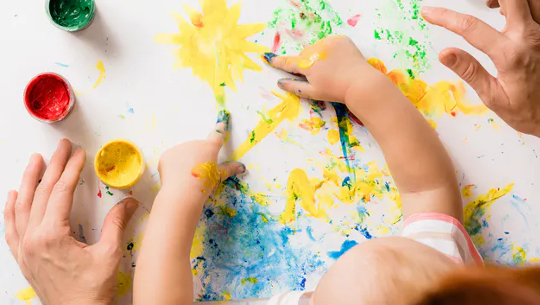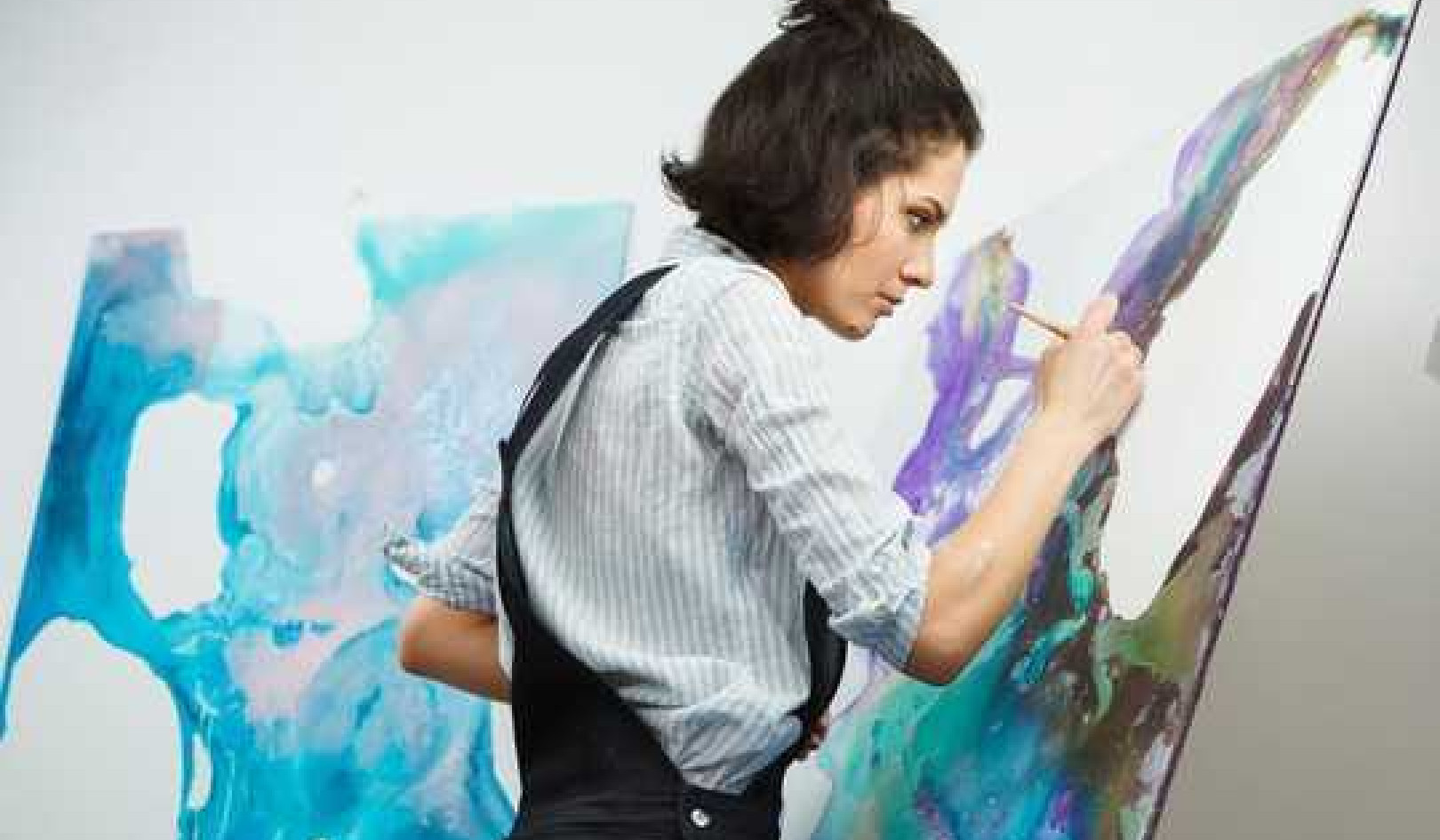Many of us may be looking to art activities to keep children busy while at home. If you are, I want you to know that you are doing something positive for your children. From improving communication and motor skills to helping them develop a sense of self, there are many reasons why art making is valuable to children. That’s why it’s important to encourage such creativity from infancy and to include art alongside home learning and as an extension of their play.
When young children make art together with their caregivers, they share a new experience which can reinforce bonding. Creativity is an extension of babies’ natural desire to share and communicate. My research, in collaboration with Dundee Contemporary Arts, found that in art therapy the art making process encouraged behaviours that build strong relationships, such as eye contact, pleasant touch, shared goals, responsiveness. You may notice during art making that there is lots of joint attention – where you both look at the same thing together. This helps babies learn social skills, such as language and perspective taking, and feel connected to others.
There are further developmental benefits from experiencing new sensations and practising motor skills. Young children also see how they can make choices and communicate these to the grown ups around them. Even something as simple as choosing a colour or making a mark lets them see the physical outcome of their choices. This builds their feeling of agency and their sense of self.
Art making for children
These benefits continue through childhood. Art helps children to think in new ways, and to explore ideas – as the art and education academic, John Matthews tells us, scribbles are a process of investigation, not just random marks.
When you make art together with your children you add additional relational benefits, as they share feelings and ideas. Art is communication without the need to be verbal, which may allow them to express themselves more honestly than through speech.
I advocate joining in the art making together with your child wherever possible. So, where to begin? The best creative activities are those which invite children to play and explore without set outcomes. Your role is to create the right conditions for them to engage and then to follow their lead. You may be surprised by their ideas. An invitation can be as simple as offering an interesting material and suggesting that they see what it feels like.
If you have small babies you can start with just a couple of blobs of paint on a large sheet of paper on the floor for them to explore on their tummy. Try home-made edible paints. Keep it short and have a nice bath ready!
Here are more ideas for creative invitations for all ages that use simple materials.
Printing
Printing transfers an image from one surface to another. Younger children can spread paint across the back of a baking tray, mixing to their fancy, then press a sheet of paper on top, making a print. Try the back of cupcake tins to get nice circular images.
Offer older children tools like cotton buds or a blunt pencil to draw into the paint on the baking tray, then print to transfer the design. Or they could add paper shapes or leaves on top of the paint before printing, like a stencil.
 Use interesting objects from around the house to create stamps. Dundee Creative Arts, Author provided
Use interesting objects from around the house to create stamps. Dundee Creative Arts, Author provided
Stamping
Stamping uses an object to transfer paint to paper. Dundee Contemporary Arts have a nice video for children to create their own stamps from scrap card or sponges. For smaller children why not try using things from around the house as stamps? Anything which can be dipped in paint will work – potato mashers, cardboard tubes, spatulas, toy animals or cars.
Light and shadows
If you want some non-messy creativity try drawing with shadows. Spread a sheet between chairs, shine a light and let children experiment with their hands or holding up objects to see the shadow they cast. Older children may like to cut out figures or animals, tape them to cutlery or a pencil and use them to create an animation.
Remember, it’s not about producing perfection but allowing children to enjoy the process and sharing that with them. And, importantly, having fun.![]()
About the Author
Vicky Armstrong, Postgraduate researcher in Psychology and Art Therapist, University of Dundee
This article is republished from The Conversation under a Creative Commons license. Read the original article.

Related Books:
Here are 5 non-fiction books on parenting that are currently Best Sellers on Amazon.com:The Whole-Brain Child: 12 Revolutionary Strategies to Nurture Your Child's Developing Mind
by Daniel J. Siegel and Tina Payne Bryson
This book provides practical strategies for parents to help their children develop emotional intelligence, self-regulation, and resilience using insights from neuroscience.
Click for more info or to order
No-Drama Discipline: The Whole-Brain Way to Calm the Chaos and Nurture Your Child's Developing Mind
by Daniel J. Siegel and Tina Payne Bryson
The authors of The Whole-Brain Child offer guidance for parents to discipline their children in a way that promotes emotional regulation, problem-solving, and empathy.
Click for more info or to order
How to Talk So Kids Will Listen & Listen So Kids Will Talk
by Adele Faber and Elaine Mazlish
This classic book provides practical communication techniques for parents to connect with their children and foster cooperation and respect.
Click for more info or to order
The Montessori Toddler: A Parent's Guide to Raising a Curious and Responsible Human Being
by Simone Davies
This guide offers insights and strategies for parents to implement Montessori principles at home and foster their toddler's natural curiosity, independence, and love of learning.
Click for more info or to order
Peaceful Parent, Happy Kids: How to Stop Yelling and Start Connecting
by Dr. Laura Markham
This book offers practical guidance for parents to shift their mindset and communication style to foster connection, empathy, and cooperation with their children.






















